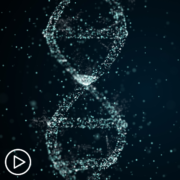How Will I Know if My AML Treatment is Working?
How Will I Know if My AML Treatment is Working? from Patient Empowerment Network on Vimeo.
During acute myeloid leukemia (AML) treatment, specific tests help to gauge a patient’s treatment response. Dr. Pinkal Desai details how diagnostic tests are used in monitoring the efficacy of an AML therapy
Dr. Pinkal Desai is Assistant Professor of Medicine at Weill Cornell Medical College and a hematologist specializing in acute myeloid leukemia (AML) at Weill Cornell Medicine. Learn more about Dr. Desai, here.
See More From The Pro-Active AML Patient Toolki
Related Resources:

|

|

What Is the Patient’s Role in Making AML Treatment Decisions? |
Transcript:
Katherine:
Once a patient has started treatment, how do you know if it’s working? How do you gauge that?
Dr. Desai:
When a patient begins treatment, whatever their regimen is, for the most part, it takes about a month to get into remission. So, initially, with any treatment we would use, the blood counts will actually go down. Everything is down, down, down. That’s important, and it’s good, actually, because if we can’t wipe out these cells, then we’re not going to. The patient’s not going to go into remission. It’s good that these blood counts drop and they keep like that for a month.
After a month, generally, is the first look on an average to see where it is, and that kind of depends on the regimen. For intensive chemotherapy, we take a look in the middle, like Day 14, to see did we wipe out all the leukemia? And can we modify treatment so that whatever might be left behind will clean out? For lower intensity treatments, it’s about a month. So, that’s the first sort of real look at whether a patient is in remission.
And again, when I say, remission is a morphologic criteria that we see the blast count are less than 5 percent, and the cells are – the normal cells are back to what is considered within normal limits or normal for that person’s age. And the idea, at that time, is to not only just confirm remission, but like I was saying, how good is the remission.
So, that’s where MRD testing comes into play. You want to see what you want to find, even if it’s by small numbers, what is the percentage of leukemia that’s left behind. 0.01 percent, 0.001 percent. This is important.
The goal is to ultimately get that down to zero, and that’s how we use it during induction, even when they’re going through consolidation, we’re episodically monitoring with bone marrow or blood testing for some of these molecular mutations that is there continued response from where we started off? And once the treatment is done, we are still, we’re seeing these patients on a regular basis, sometimes doing bone marrow biopsies at regular intervals, to again make sure that there is continued response. And can we see something different, or is there an emerging population of cells that are worrisome, and how do we modify our treatments to try to kill these cells?










